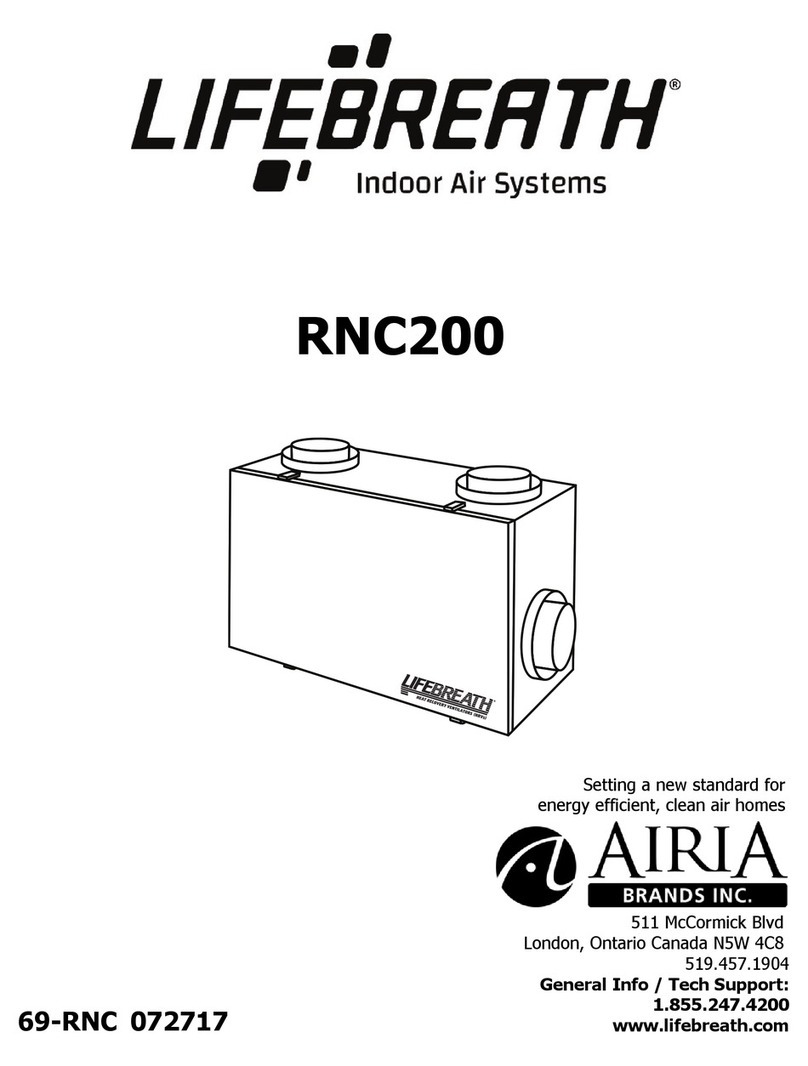
Location - Installation Notes
Install the unit in a heated space that provides clearance for service access. A typical location is in
either a mechanical room or an area close to the outside wall within close proximity to where the
weatherhoods are mounted. If a basement area is inconvenient or non-existent, install the unit in a
utility room or laundry room.
Attic installations are not recommended due to
The complexity of work to install
Freezing conditions in the attic
Difficulty of access for servicing and cleaning
If attic installation is necessary the unit must be situated in a conditioned space.
Leave sufficient clearance at the front of the access door for servicing the air filters and core. The
recommended clearance is a minimum of 25 in (635 mm) for opening and closing the door. Airia
provides four straps for hanging the unit from the basement floor joists.
2
Table of Contents
Location ...................................................................................................................................... 2
Pre-Installation Notes ................................................................................................................... 3
Simplified Installation (Return/Return Method) ................................................................................ 4
Partially Dedicated System ............................................................................................................ 5
Fully Dedicated System ................................................................................................................. 6
Hanging Straps ............................................................................................................................ 7
Drain Connection ......................................................................................................................... 8
Grilles ......................................................................................................................................... 9
Grille Fittings .............................................................................................................................. 10
Airflow Weatherhood and Weatherhood Requirements ................................................................... 11
Dual Hood .................................................................................................................................. 12
Main Control Installation .............................................................................................................. 13
Mechanical Timers Installation ...................................................................................................... 14
Installation and Operation 20/40/60 Minute Timers: 99-DET01 ........................................................ 17
Installer Selectable High Speed Settings ....................................................................................... 16
Dimensional Model Drawings - AIR135-ES Model ............................................................................ 17
Balancing the Airflows ................................................................................................................. 18
Determining the CFM ................................................................................................................... 19
Balancing Collar Instructions ........................................................................................................ 19
Balancing the Airflows with a Pitot Tube ....................................................................................... 20
Balancing the Airflow Using the Door Ports ................................................................................... 21
Airflow Reference Chart - AIR135-ES ............................................................................................. 22
Troubleshooting .......................................................................................................................... 24
Installation and Operation of Wireless 20/40/60 Minute Timers: 99-DET02....................... ................. 15
Installation and Pairing of Repeaters: 99-RX02.............................................................. .................. 16




























